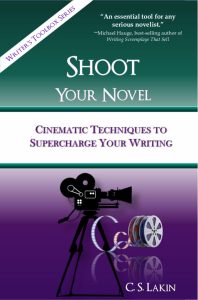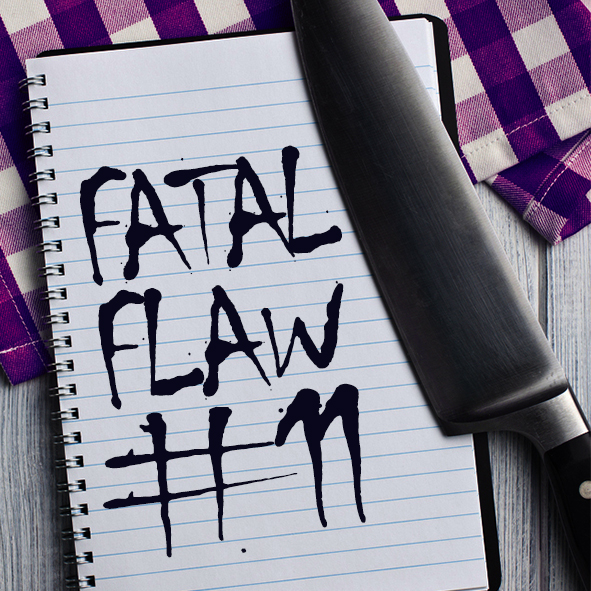Do You Really Know How to “Show, Don’t Tell”?
Part of fast-tracking to success lies in writing novels that readers can quickly sink their teeth into. That usually means getting quickly into story and characters in a visual, active way.
In other words, starting scenes with pages of explanation and narrative are a kiss of death for novels these days. Our society is entrenched in movies, TV shows, video games, and dynamic apps for all our devices. All this has influenced (contaminated?) the reader experience.
Readers today expect our novels to read like movies. They want to get right into a character’s POV, right into action, become immersed in worlds without delay.
If you’ve been writing novels for any length of time, you’ve probably heard the golden rule: Show, don’t tell. I have numerous blog posts on this topic, to help writers get what this is all about.
Here are some of the posts. If you have any question about what it means to show instead of tell, it would be well worth your while to read (or reread) these. Way too many aspiring novelists commit this fatal flaw, and as a result, their novels suffer.
Getting Right into the Middle of Things
I’ll say this definitively: if you don’t master “show, don’t tell,” you probably won’t write novels people will want to buy or read. It’s that important.
Caveat: of course, genre is going to play a part in just how much you “tell.” Some genres may have a lot more narrative than others, and that’s okay. But it better be riveting narrative centered on a terrific premise and story concept. All those things are crucial.
Here’s a saying that some writers tout: “Enter late, leave early.”
What does that mean? That when it comes to scenes, you want to start after something is already underway. In the middle of something happening. And you want to end quickly after your high moment, leaving the reader wanting to jump right into the next scene.
All this has to do with show, don’t tell.
But here’s the thing:
While writers are told to “show, not tell,” they aren’t shown how to do this.
How do you write a scene that shows? The easiest way I know to explain this is to aim for cinematic effect.
In other words, you should be able to picture your entire scene, from the first word to the last, playing out on a movie screen.
But here are some questions you might ask:
- How much or how little detail do I (or should I) put in my novel in order to help the reader see the story the way I see it? And how much should I leave to the reader’s imagination?
- How can I best write each scene so that I “show” the reader what I want him to see?
- How can I write scenes that will give the emotional impact equivalent to what can be conveyed through a film?
The most successful authors today, across genres, are those that learn the art of cinematic technique. The more you can picture your scenes as movie scenes, and structure them with segments of specific “camera shots,” the more powerful they will be.
 I wrote Shoot Your Novel because of the lack of strong instruction available to novelists in this technique.
I wrote Shoot Your Novel because of the lack of strong instruction available to novelists in this technique.
You might write a dynamic scene, in real time, in action, and still have it fall flat. In other words, just “showing” a scene play out doesn’t ensure it’s going to be terrific, even if it’s written well and it promises to have exciting action.
A novelist needs to also be a director and a filmmaker, and few books talk about the ways novelists can wear these “hats” when writing their scenes.
This book is so unique—there is nothing like it on the market. Hear what Michael Hauge—top Hollywood script consultant and author of Writing Screenplays That Sell—says about Shoot Your Novel:
“With Shoot Your Novel, Susanne Lakin does something wonderful and unique. While lots of us in the business of helping writers and storytellers recommend adding vivid images to scenes, Lakin goes much further to reveal how employing the tools and techniques of movie directing, editing and cinematography will give your fiction deeper meaning and greater emotional impact. Her book is an essential tool for any serious novelist.”
I’d like to encourage you to get Shoot Your Novel. It shows you how you can utilize many of the powerful cinematic effects filmmakers use—including specific camera shots, image systems (colors, shapes, sounds, motifs), and more.
This isn’t hard to do. You are already so used to thinking cinematically because of all the media you’re exposed to. What writers need help with is translating that technique into fiction writing.
Get Shoot Your Novel here on AMAZON (paperback or ebook). It’s only $4.99—the price of a Starbucks latte!
Nail that “show, don’t tell” technique. It will make all the difference in the world (the difference between a mediocre novel and a terrific one)!
Any great novels come to mind that excel in showing rather than telling? Share in the comments!












I so agree with the “show,don’t tell” requirement. I recently read a book by an author I highly respect and whose work I love, but after a sudden and very brief climax, this author used a narrative chapter to tie up all the loose ends. It really dumbed down the anticipation I’d been riding on for the length of the novel. So, I suppose this can happen to anyone, especially with deadlines looming, and we all need to be vigilant to the temptation to tell.
Though leading action is a necessity for today’s reader (suckled on fast food, empty carbs, the Internet, and a plethora of apps to rob us of any chance reflective moments), certainly it has not been a necessity for less hyperactive readers.
As you so aptly observed “…starting scenes with pages of explanation and narrative are a kiss of death for novels these days. Our society is entrenched in movies, TV shows, video games, and dynamic apps for all our devices. All this has influenced (contaminated?) the reader experience.
Dickens’ “A Tale of Two Cities” leads with a shockingly rich lack of action “It was the best of times, it was the worst of times, it was the age of wisdom, it was the age of foolishness, it was the epoch of belief, it was the epoch of incredulity, it was the season of Light, it was the season of Darkness, it was the spring of hope, it was the winter of despair, we had everything before us, we had nothing before us, we were all going direct to Heaven, we were all going direct the other way–in short, the period was so far like the present period, that some of its noisiest authorities insisted on its being received, for good or for evil, in the superlative degree of comparison only.”
Not to say action is bad, just that there was once room for leading with art, if the writers was a master like Dickens. In any generation, though, the preachy are better of sticking with action.
As far as your advice that writers think of their story as a movie, it makes me recall something that Alfred Hitchcock once said about how he could take a lousy script and make it into a good movie. He basically claimed if a couple is sitting at a restaurant having an innocuous (boring) conversation, the audience will still be holding-its-breath riveted if they know there is a bomb under the table about to go off.
Thanks for your informative blog!